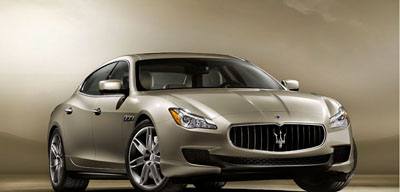Luxury brands have an opportunity to appeal to an increasingly relevant group of consumers known as the HENRYs, or High-Earners-Not-Yet-Rich, who have more spending power than the middle class and may eventually become wealthy in the future, according to a new report by Unity Marketing.
As middle-class consumers lose discretionary spending power, and the gap between the rich and poor widens, it is increasingly important for brands to focus marketing strategies on the HENRYs. HENRYs are the new face of the mass-market consumer, and brands that are able to appeal to them will gain an edge over competitors in the luxury market.
“In words of Rodney Dangerfield, HENRYs ‘get no respect’ when it comes to many luxury brands,” said Pam Danziger, president of Unity Marketing, Stephens, PA. “True, HENRYs (household income $100k-$249.9k) have significantly less discretionary spending potential than the ultra-affluents (household income $250k+) and HNW (net worth $1 million or more) or UHNW (net worth $30 million+), but the HENRYs are the gateway demographic through which most of those who reach ultra-affluent, HNW and UHNW status move through.
“My advice for luxury brands: Ignore HENRYs at your own risk.”
Stuck in the middle
The HENRYs are defined as consumers from households with incomes between 100k and 250k. They exist between the middle class, which are defined as those with incomes between $50,000 and $99,900, and the wealthy, which earn more than $250,000 or have a net worth of more than $1 million.

Brands in many industries can target marketing to HENRYs
For luxury brands, HENRYs are important because they represent future ultra-affluent and wealthy consumers. By establishing a personal connection with these individuals, brands can guarantee that they will continue to make purchases when their income increases.
"No one-size-fits-all strategy will work for HENRYs. It's an incredibly diverse segment," Ms. Danziger said. "But one of the common misconceptions about HENRY is that he or she is young, which isn't the case.

HENRYs are eager to by luxury brand accessories and fashion
"Many more mature affluents are HENRYs by choice, having decided that a modest level of affluent income is perfectly acceptable and gives them the lifestyle to which they aspire. I also see this trend among millennials on the road to affluence.
"Many of that generation are willing to trade off earning extreme high levels of income to allow for more time to enjoy themselves and pursue their interests. Affluence doesn't come by chance, and many Americans are content to maintain a HENRY level of income."

This demographic has a significant disposable income
While HENRYs do not spend as much as ultra-affluents on individual purchases, there are many more HENRYs than ultra-affluents, and their combined numbers make them a significant consumer base. Ultimately the total value of the HENRY market is about four times larger than that of the ultra-affluent market.
Luxury brands typically focus their marketing on ultra-affluents, considering them the ideal consumer. Changing emphasis to HENRYs, however, can give these brands access to a much larger number of consumers who are eager to purchase their products.

HENRYs are able to purchase products purely for pleasure
Up and coming
Previous research has shown the benefits of using marketing strategies specifically targeted to the HENRY demographic. To reach the now-powerful group of affluent consumers on the lower-income end of the spectrum, marketers may want to become more accessible via brand extensions or refocused campaigns, according to Unity Marketing’s Annual State of the Luxury Market Report 2012.
The High-Earners-Not-Rich-Yet (HENRY) consumers returned to the United States marketplace after an absence in 2010 and were expected to spend more on luxury throughout 2012. While the luxury segment saw historically high consumer spending in 2010, spending dropped in 2011, signaling a return to the norm (see story).
The HENRY market has a number of characteristics that differentiate it from the ultra-affluent market. In today’s economy, luxury marketers should look more toward psychographics than income demographics when trying to pinpoint a target audience, according to a new study by Unity Marketing.
Consumers under the age of 45 spend enough to be one of the top two highest-spending customer demographics, along with those earning $250,000 or more a year. Since consumer willingness to spend is dictated more by age rather than income, marketers need to make sure they are working to target a younger demographic, which has a high growth potential (see story).
Focusing marketing strategies on the HENRYs will allow brands to forge personal relationships with an increasingly important consumer base.
"HENRYs are the next mass-market for brands both up and down the pricing spectrum," Ms. Danziger said. "The fact that the middle-class has lost so much spending power, the importance of HENRYs to mass brands is growing by leaps and bounds.
"Luxury brands too are starting to recognize that HENRYs are an attractive market segment, and not just for the spin off brands, extension brands or secondary lines," she said. "They need to offer real and lasting value to the HENRYs who often can and are willing to trade up, but only if the value is there.
"Luxury brands have to get back to what made them great in the first place, which is exceptional quality, impeccable classic styling and goods that will last."
Final Take
Kay Sorin, editorial assistant on Luxury Daily, New York
{"ct":"OP9rDIKE6d\/WQJJhyHdHuQQiDgU1ufvFhZ0TbUg8JZQNmuctfVYfj5B23ujv3S2rYGDYAF3YiHVHGh5y4G+BHktSas67g6FnajjozfLoyoL+ArpN\/o2i5HtAL1BRthvMvfAhGejllZDsWJikbqXs4fwhnvL6K2WXx4SAaCp3nf+faS+ytDWfnh+KwCbvfgZR61\/bH6iVjAe7IXv0p\/FLRwJg6hId3YUMv5MJq0Fb5SW6ecQAMU6dcGcOqfO7zBn8N79od7BggC0VJvjIuYHSIcD4ebPUsqlTVGq5JlcQeRD4BtpTvEP6jXxwV2BhAZ7xYN2eNFRjFu4odDpYJdFcgswKvJiLL2DJqT5w0o6\/L0WBBLODbvyZhU5CjEFNCxwS0hlfVQg4mpd+2ZWtiQPrjnFDEIZWg\/qmcpgLPF7\/lSHV4ds+XmEpBs0ICboEqS6ckDVBiqNnX4DLTqDrRpGp2CV7vP4\/uNeKVIhI7PQ+eGOwAhkMYsWinYo8JxsRyS1Wy1S2zwGvukHzO7DGLMS2jKEZ8kPUlTELxhELVXKCZeY9TIv1tnNVb+7wUvQJCgdz20NX3lj1E0VhKIG6CgnuAJlHt7vOnU8olPnXHUs\/HewiFYM9wmbCgePNesZGRVgFEqaMeiXcSzCjqOQgAaaRoIYr2jo2237g0e2S9GFxo2534ZY72qAOYoDbXk7wdgO3mthYch44siuJKwTs9dbmrZZboRH65+642vKm9q72\/1k1+NP\/YmdFN2EdRNioLcfI4e6V3cTEuFim0HCd3NllLT6UyzMU91P67RXknyxwRcEn4ndQQsMmS7qfHS8BhU\/lj+v5wGq5kK4AVRA04xMcmwczFcmiUq8fTvvU30ykf6wyTLo\/Iz7yAyeZVpA4ZBWbhJo2ePXDg8O+CqBbRY8\/Rju\/5w7ZgQn\/ammo42d5GU\/8UVFXgWPlsHmbg6QLmMdrbc53B+\/kmHgI4v\/Iiy1jxQVK4ctz6pXapdtlbWV8rG2KoRrasZ1DTaeuy4Mqg7RBxrR3Blju2Sjzw97JuQnRAq3A3z7tyzlCgdThHuvELnJ3Q9Rg11JHdceN027cMS8wggpb03UMxEFbcXgJlVTml+0tHoEba9WMDBrCqkfxIWupzBr2aU5CuPHJnl2zrpBrDzMvksaJ6+ZLGUzusxn5\/i0WA+AqFTCsHjlUS\/QqUOg00kcA60D\/s+t9gvQCzRFz9oyisiMwBdJSXvxTXaO5RMKmnfd\/VQ8d\/cMG+KwFWWKEmRpjQQp+eUo4ugYhnOWQhVeY2t40MrqZHh9WuXeh40+KkskRsSejMQFKBqAr061E7qbbV+3BtogxNut9XDdun0A24b3BzLlADV74FUhnYTWzyKGT4aBz1yBklo+W99jeo0Bautd9vTW72doIzCgyQL110E9iKtjM1DQPvx0zo+1IWgQhgQMDhWXiS5ET2d3CN0zIIKSEEsW1Fivrf2PUkKck0TCZatuVicvtRATSQAKq\/tGP\/JwUJB4hvJQ2lHr7dQAVjhlntxxioVlRJmRNrflqQd8M\/fvGtfxVj0Kvj+GzcMmQnNVbBfanRtZwHtMggrVKnJ15Ls8BcJeMJckckNbfi+IhSD1ob6Y9E\/q8B\/KmLHlTMUeySni\/7kXAFWrDqRDM6UZ29CUFyB\/nF6KzgItUqYEg6zgmix0xV1w8AidrKjODUS5gbx97nZiSzz5nO\/5yjzuYE1O3ziF29fl9OtIgbc4FOAyu42YRrhPksBYisLUiX\/mxl1jXu+vh+f9O9lk+cDCp4aPC4I6Zo1lrFPhUnPakytyTfX2yBbXUdC2ze6QdbCn15oKgrSzlgKckDDwajMiTEPRCJ\/V5CnDRVxm7l8xGgc8cPK6n2rZWSIGm8an2FomLP\/O\/3VyaA9h540FUdz9uIli8dXvfh+NF9pDPhaiEXPCBmaUfM6aFHvE8b29r9eb3F91bwxXGyQRrklJWrouYqYW6dOWQR0dygmLrO59grwjnYmNtAYHJ3rDTTRiMLmxesQgQze0VWA8mQ47Hm8MepM4ecZROtNJSf8OzmNIGPku431VVuqSKljfAFr6+3BnH\/Yz88VJsIRHjU+ArZMyjWKBRX3N4eQasGUKlwxUHj\/PqGtM5BHzycmFC9Fz0KhbrSPTlxPSsv+Q0CKO7foU6dgx5STGGaYvyJK11BmLNEbOtp3cJxGsvek+JBbGof0\/p518HVSN7yS85ud6R6bzPOatyQP24zyW9jjatLADjslpO5jV8vhFKZVLNtc9+QGLXUOqI2nPOGIVwrSNxIvuRr99K4\/9p\/poUVZpnFllt1ByNbeJnhZuEKeTvape3v4PenTb0mOmq1ViJ9Nc2WBl2oKxsWOTTwBVQeEnsO9DbNECPHaTP7cu1pt3xxVNOLEWyQbOK030nB6qfgupVC0TOe+u\/\/+F3mE7xYC8HlZWL523GmoKXpsVXJnF21QWbFXrvnAFpclm2ZfWgfs78yxf\/bi3fhcnG2gShMdUfM1UM9tQXf0tFKsd6Ig8EHvf6Id8U\/btvokPpzOKrvv5fd+Ts7wvybPryCOkqIfmQrt425SazEwJ9zGEj3ycuiJtClutYq5V2t53c81iG7PBQU5VeQCkXDn1Zh+z2OVLBtx1wA0pqqJn+xkoAvQx+sdE61w\/faFnD2yKicn5EoqrnCeikU+Q0oShKKkqWYGzIIb0UfIDGk8TRFolDbIREuds8Zb5YIV03SzXtnY\/wq56ehY0DkpCiYGe6zH1FE8Fm22m6do7nwHuMXhW\/GwnH0jaZCNPcHzmtuzhJYAcVqQ5obmYuUEEQKZnfS7Oxmfd+J+u1DT2hrpRnLP8JCUbc3DPHibaMarr4rCxgPbo7rV+2Rd6q0GkBHv0nDxRG4sgVzofjdMAWV0iJ+dbe44XIjxRDOmqPz3b654cVvSvXVuftYTC9f0B7SLBlqQ4BqGRDGHMka\/nwdNXk4ryah0vYSIKZp\/YVbcU7gRNwRG2dVGLa6\/ObvaNPhZ\/QXbL8C5xsectjfMGLJWAKLe5C5TzLGOQ5IUWOIlRWJlBW+g1jdS+PbENh98uDpJVypK1qSNSrsB\/GmCwhdxIQsN6Nzd+70o3lrCibU6BiJxa\/blkD1MgW4PrhTutD9wxyFXtBQTdMi07aqNsX6voX5rInx03JQng4oItaUs7FYubI7cUkwue0DXZz6hsCEK98GnuCim0xM3SL2vwAmSVjLzq7XcbamKetVUEktPlOzRJj07H3bHlofZ+L2AtbA7p+OsNpm8Cls4vbOURBqCkTuGziu3ZttmgoVaENoP0tVAY8AcHz8cFyKAl+fzS6Q1LUW2TrIHNQy\/opZ4QfDucaj\/+tt+LmZCC39pslcoexQuwtXRnFnSvZvgSeKOUM3vXL93fAi6nj+f2+S7Enzm032gU2\/fNMPzolF4Menp49E6Wcqi5oig7ZNsoIKLQsnAVjzi++6Hq4qWrA+gkuLruLW2GOsNMiuWhMIpFhTxhCJsgNs9SU6BlUMlMFAeMzMUSJBdlxeGUVQXcwnzGS+7LPAiWDHhWwQUyaA+L0mr2Fye9Vm1mh\/lm4QZZNHBippRfgxmia6kAi3beWWHBSC3JeHqKyIfMLgNf0IRVawhUTu0EQYHSjhu6PpxOazwqb9bqX5pTXyLmlAEFrM\/\/aIdXbkCiNuVYZa08HPLD3gGY3LrGfoZonKaVTymbSXki8SoJgHdvymiHVoGG0Xp5LhRyRUO4XmMIOaD4kUloRrHoI7EnparmOKcssqXa65nbsdTGzk3XXC3ZptEpn\/5+u\/La\/dsKmW5FsFWg6\/nF0bREg5nK4dt5iCy0D3\/TrcuMGIAKo9GuognS1FBsoTLHWWaLN1enxdOb+xIUSMmVMiSeOzEIZj5k+IzrvCbdnGSpBtwDJ13PaP1hEQhRjUTn2snw\/MyxM79hGSJp2REogDpTsfmhPwEOBrzgZiL3McghUghnHm2qZBquZpzk3HoaBdVel4uvGEyMAWtyZXL5B28SA0IJl0bYLx4sgSXs3Yeziv8qsolxM8I5SkvqxdZaIv6r36oNPEaBh8YtwW+PTcPByZukjQnJr3msLuxbCmOw8gmgd36ZOOqFW83UwHIZYs6CAI+56vH\/R12uAt5AP7C07202CdF0SmOWe25EjgvTjdGY1B7ebXL9b5vCKx4rc6764miiz+4XGG3DjqdSRLwywAoLu0Szh4uUYb+YE+ll2LV8nGFtX\/RMpPGP8V9CLtpTdn3oJSCKYRnY3PRrf76bXdT0PAh3KWuCw6T80ikDyunmIWIlmDebdCaE6Pe9Y\/eYLQtSqCeGYvNgYz9xfeIb1ew70uf3kCRkCIOoXmn1811IqfF9eWWG1N05KVIiXyVyAPYwcTSYz6\/4WU9NTykforLWMj5O44hf\/C+OpDdNpSsOwyR8ejUyRMnjupob9sU4vO\/2\/hs4Qia\/bnv5qfEAPKDblIZ6hHIawdq9GWFhcIcvvl8nYc+VEFBzcDDNXqF6WOALVNGcpTSI7FHd9F9Ui6do7GI+MuZUsJApxUo7W2BGS+NFkO\/hCuN38YlsmWW9E1+I1Eqm52hNtNCD70UueH4nEHCLrIu4Sg+nRGT6WHcOVb4qCGZxCAHgkmynXIX1Fb2UWwsF13Y7rS7nqnhC\/Y7276j5jcxUyF+p9x2Co92\/y160o8V9jqwAxdJ3JjV+GgwF6d97K0EHsrApLSSfu98repHZbyEYNgBSe86IX3KpizQOLlpX8K841I7RwMqkgpMNjUk9lY7DaK5Wz5o2Y+lEWMHj+ve5PKIYAyd2k9b+6kPRVZCwfj+7Z0B2Lj5rtrxGmZ6FCykOU6CHVu9Oe2NseetJAbciuOa41uSiqeEmDeglxDRJeKOgTtWAM\/wEXSn+lDLe+nZohNF\/aZ+yK3SCSebKvy6Lc9xZ7zzoTysZZWNLVfUPQbzxDvfrLFxGS4k\/D8fAdHoz7mtY+oI+kWtpaAtBHAAiEwLRar8fWVZ3Gmwu77EVOcZri0VPuHm8Larw2MLNZ4IaBpdZd+NhiydJZD06Lr8CJ3Rh3xFlg0tl\/ycIbtwtL\/dMO5ZE4v\/rFberwo+B3vlk2MqJ5spXFi3iq0RYRNNyYRAh02inratgvCCBwbsRQcGgw9\/0l2PPpUWNkKN53Dui2HJ8Cl++BCWqMWVFoS8x2sNfT6pQ1B3iKyyG\/xilE+abSjw50RDS5lKv+XmAIaOoesN2G\/GK6PH5Zlf05EY76VnRokn9HKM7ecU+9Nfo\/OrdLOMgjHFHdYM578kMV+5B8ma9DqS0nebCFo9Z8mIhmXrqvzOjE4O9PJ2\/rOq\/Wsxlkuw+7QU1bi80wZZyoY8TW0YNV6zsLZc5QzmtManPIWv7cWSeNjGJEaPVjgcrbWhv+nCkOza6wzIv6tLEAxQNhIC5xpIRAgDK2h1LaWKg41bVRxdDzgbCIf6W3jAAZae1dM9xipPF40uxWNd\/\/DZFnY4vHOzSnjwIYNi8W6GdBuBUbTigSfAXigaSI0qkTScIvzIMK6tiaXLy+V0+FyduIerXdSzIBOawmC4UuPwUnIKbo6F3uWqxHDKpjyy7dEx8CVFlc6HyIXJwVauewm1qlsgFFkaAl3VUa\/Zp9yhqCGL1p8DShrkcxkaAB\/GVJMxlJZADP15MzJK3XJRCNeSE2AynclkXxOJNJWF76GYXzvRAvgi\/e\/0ckQu+YmNb6H2+acVE\/KVulFuB6BRRuHyFo+0UQ\/V3FP\/amQx2L1g9r3aDmFycEjvF36+lFMeL6ssCE\/pQXIcTbhtlqdafyNNKfk5RbSJXlQsGpRaz7ZxY5u\/mbuRl3Cs9i8c1+7Kht2RyEQgxrfyoZw8TAI07gxShrgHdD2oBx7ybs89yst9nLylBdy07yVXd\/xPIaBtdHs0d8FmcnunIOXFVa4Z2sLB4PW7VFRzsofjYKTb0ykqSMIW8fNQrl7rAwIgLUvb1vks6FudtkzjiYfl+Go5\/4Ph\/dzMmOLpyZkNanL+tETkH6a8m34ew5G79pI2ailiIakC9zw1y+VYj4BztrJhHS9UrjgqLAO5JrlzjpQZuKwB7libHKC\/f0NnNjTjgCKeoj9Y+Cne5w967K9x1hLzElopCd0BNihl8brbUpRes1+gt6+ictIVSUz5Gud5Hhl+T1efjBQVjkwtVRxObLQHGkbAisx2UkcOsFd859Sqq\/5ovphQoPcSww5owlDbhEtymf+oyzU+YT+\/sDBn3izSbpjrAyTEQKLlAaq8vTXetMuLxDf5EJe2EJP9PQAKZ5TIsQeYo13dPkz+z12aJ1QmmYZgoVrHlnoa+fp+euCm4ONgNzTmw9yomwHKunpI6PvKCbxeQrGCHvTCFBENH1VB3QDZcdjJn2mawO8rhxw07mSTImXm1CsMcgb1+95HfRYFoyfLPVB\/sTScbqo7gJT\/xw87LEkyDQSt39AiUsnYWXmrGQ6IBwMBqA+b5JeQZA41RecjknAZzg9sO2wipBHdB0TzdWdWHq7iWCudK+irnXyDExisiE11A\/I2+lhWKJR9CqCJuDrINobIi\/NvJdFo+fYMqY9IG4skTLXI7y\/GcAHoOJr6uvXTtZz6ulJThcx8q1Uy6HUqBwZxSy9yHB3GXdTkq3SUToYPIbdfxdJDaBneAQGtdKE2qyTWmL46eW+BupCGFO8tcqQmru3kIxsdFXAEp3ylIy260wUEvc6IJUSwKb5sYIsTLs5XE1INSbNUVvlpkFgeTdOPlCz+ovDB9uu7M3vEczP3wGgBGU2x658lnzwTqD5HYIWJFu14+tKVYh+uT0MlEXn4ZlA43Xy8aMxXoT4tU5IHwMu4GqdSjJZ+bDzWBIwzDnhwf3trOiHUO6UdxdeE0x7sw36XtVAz+UehrCazY2XToq7dKDdKC\/09I\/LfYglGshHX6rnXR8OGOf1F1jaf0w4QkJP2hHMqT4L3UXuEzl8KzvQjqjOCrRl9wwgswUN\/8PS2NM77jqDVp+L6GWrYwqO95EPCuhD\/fo9Egm+GOCb6ljLkXaz1kkDONjEQcqLNYuN55vxju80PNjNED0HuBFRuLGuhbpv8wJz3dl3x9eEqpiXoY67v3csZHunHXQDM1k8sNYlvTLfNlRtoe6VBNJ9jTT58yc2k5vh794iozhF9dsHn2mT6W3ullHZ6cGXyV0+czmlcAXnp9d0XtWwUbpoww4Z8ZqCxQZGwYHomidodcSmlXkUlNQ4IIL88lW7n0cTVTteWkt1GEspzZ2n3AeCubbSpnICifwW7OIvRnjNkxGyd5e7g5MMSLM2Z0E2vgRDSf8USlRYKQNXNr6e4HPZEh\/+85v3X65RR3fTLVD6wDDwOqh6C812NzV6qYMynxZuvT859L\/vio0yjUQAt0stZ\/fW0tSw6YiktMl0UDYoBOWs9aKtdOyMwplAP8H15A6u0jXGtIWnc94hUkLOOGgJXt0ebx5OZh\/IkuHhsqvVxZspvBBQej9KjpsRn3uCOjRKKB1\/hgYpRvaEYGU2B7ojWO9vnu7BlvzssFJOwmJybWL93MuTClVnUh76B3UFO4IwNKUXw9Q3ipgfzLpYO4UC+tHYEBZNUBfkMRT7rT34IKuowp0U6X8k2fCRJtF0iPlAOe2ribyzQ74S5OO9SBeCeAZCARFw4LClGZ8npy\/PHrNfEvmcS4WngRTfkJnion49DbgeV4BPrfpcdUpD58pmk1tQ\/Ra+HyfJj10Nq3fh9HuYGR2waM09QOS7iABiFON38qEuahIPhj8JkTB2h10vfzThZw1zdELqOrC\/bp+DbChmWZR3ijleaLf92GhE4muCV7YVflUfCECDBQg\/InEmXcWUUzYjOrZ3WlySNvPMBrnNNHpzvU5q90vhh\/ch2kerKRsQE9MrYY4B2DZ0SbY\/\/IkGJ60wmQmu9QvuQsoYmoWm3XYc4u\/btKKw+C2HYMKQhnASTqdB8ZTsURQen+fe97bnbZLBiRMasSv7RIEG+DvveQCh1LcHpb5d8Jk0UIRYQ0ft3NPD4r3qzB0Eb5QvSz9bAh\/Qcr1B5DpQq6oS20vKZMnc0Tn67ROpwUg5qftOd1W7b8dzApyJWIgy1MiZ9K6DRGpFgrRI7r3YLT\/4h+KoRftCz2KXqeqlWSlqEoc4p1Hj+t0vCC6yNzZpxjFzdPl\/08zCojku8dWq5QBignE37wq+hmmuX3dPIm5ol3c259Y3mDxlZYUKOCho1Uw\/Ot6lQhXVvuY78TEMXRWFAcgiVqcaOsSKvnyM00Baax5ySMtnApTtmFC1HHGFiNgSsUEtSdjq2+SMtnBmUPMBmYkUybzez4fRssJT14dbuDH9VEW78J4+pzLwKE5PsA5+w\/1OYFNyMO2ZCuvMnEbr6DYCPviqMHzDWUL4N9Lo9dYShP2+GETcueXxaQlUL9OXx5hEwn0RsC1k8kcPwi7ODHr9Aa7lv6mHE2vH5iPYj03OTfvbvA3AhgTjWprjhDp\/Bnlxz5e1cFt4xZtbFGCIyzXB5zmu9uGFAvEjFGe3oNQlFX\/Cso2XpeO0lXGyiFu4tLoUrIXOMpupZMPMsBNhE4RlGeTElvXimZdme\/am4dVtqdWDwU8iiemC6ZATtKEOxTiTZeDtp1As2WxCm9E8b\/nRX6O0HdQVTF2zL+qIP6rangSZfc65IwrKLf7NXRwZJ8scS+2dyosxNcZDIb9uP7N5tPUjagAisp214aYz4nFjgvuiO+kDH7KRJuFQcCA6cTBmf+A4m7Fu84lBpDA4QVAR\/Btookh\/X+fPgxGAhkbl\/6z2C1BFvHJhBzWpTdYV8MR8r8mm7JFk\/b9ZUt6jJf+31eD3NX79QAI0TThS7l\/UzKheJtr2ExZj5LClpXuz7lCRmQGQX\/QZqgjQIdWhxeiIZedJJky4Av0iWmUILtOaGb\/8lja7r6TQK2RBryI5sKyTDejA8SmWlptT54JZu8Di0VRyW7BNNrPguoUjOwPp+xSqZVjBUZ4dYItXdOgF5DlI9KW4\/CuZURLYkn6qArybEQhdOHe+t3ZPPPv0aUac3MuFTvhEJV7rePuK3NQxZGwrnTWJE0kfk5niM72HCEhN40hXHfhHlXmgfnoYlpJXCNwrZNIoK\/PW74L6mnBpx+jI3GRlIFqo5bpnJ1bH6FnfFT7wLfJqagzemvsWAbCJswhgCuyI0F6jlu+aBkO5KfRSVAxZX0j5bh6emnYwIzv3BvB4ERup28eJ+lR9ZKVEz4ay0OckcE2uReefxkzY7wyB\/t0FsVSOj6wxUnxLzxYsawIzVC693\/zKIc2zOofXbqv3d7cupHc+4k7RdAAESKQRhvCfpHfB1mZyztQYQ1bYR1fixuXhn\/AqznpagGFqd6bOrSHThWq1wLx5rLZudZNI3vsmfMrhdFentN+fskENO9BeAHw372sBzIKrG8mBXNjmbq4XoWMVkWFpf1f1VwcEL23Pmn49W5sEoKTN5II3DD8mehm4tr9pmTacLUI9stCLLKqE0+VIB1KfH\/OKCm6oPIB6mb65fH9P0p9dTPDALFbUbJteCaS2i\/KQgcUfrXw+n6vgOJTwldzKLkqYzNVmUHc5SS1ZXachncp7jUZiF8AVz4HBkgnKBvjl7fXGHKIqLBXVWuooDal9a6S4OAyozqPNcHYd4pZrP3sBgMxlTOhMiaCXrMlJCGBcx5oQYf1zuMhTO4S0i3cluO9ebQf\/SjfzbSOMqsDvDONNKed+I1dP+iJrB\/U8pdNtFPfZe17P6+SoNkNOrDYEg+8Y2tHSZzyRmDYHXRpFb8hA6YDH\/2EhEIseUwTOMt0LiUuvmbCSK3MOve9CyyN\/6XCOwMfIJbYdw5uBTChUKOzatJnW7iHYpygJ4ly0p82lBbo9jxv017\/iMncMiVVapbOx6\/XFlG1tuNKNeOFwwuZMCCEQTXMqSmy9M9oZYY4ed5y51OMZLwoJLyzphTLqttuiL7ItejXeJ5OdLQdtSf4P2KmiJGzvg\/\/P7Uc7UXC8crPVoosWfQYnRLgwlHYgD0bj4J1ZpDA\/jWuMHofOYNfKYuzULMwaO2eNj62heLU3dvYbkD0+uU+EKvzug0OroCOavjvlAFF\/zb9Ni8hG2qhD9zGAjCS9aRhMT4wo4LqU2tqtExGUx+CXIE65zvvvNpzvPKuBhjO60xvnUtxA8ePSvctQGBTyFuZLwkDX2g1PEYVFPFLrp56wworSd0ITUHndwclYH\/\/yS7pG758UGcH60m3zhwAO2o0miYzZIFMzO4d1IBzB3pz\/9iK3DvaOwAgn\/qk4mjEDpEtO7wrODAJW6Rr8srvF+uhzcEstgpDnFbOHHjWasoa0JF0lKaCsYEXB9BAK\/lEkJ62UvQPUQ4wakcQ9ON\/Zf7PPiYDZYiUjAfww8ExLt2IhyqGTPdO6ty\/0UOYfYx5toD36UmFt5z6LgFpGfweD9aufzL9EQmOWzKDm+cF1yVGAmle03KOkiWmVUAwMnQL+hU3hG91ljQuE+jyM4azFlv49AY+KQ2II0O5gz71DoGf8zd38zqOOu7I9cBtP\/rdRbohz884eD5pXGUz96X0CBh2pxt2qSGnFRDyhR4lJkd2j1KFDxKrt39Zdpc2JPkBTnOU0qDrIbya5hclNmMW2nxiqL7GHoVFQQXyhBhkKgyFz4GJznO\/RF+oqzdw7Wrstw==","iv":"6826d74aca5e6add546885b8b1ef2646","s":"f7256e8fd3500464"}
